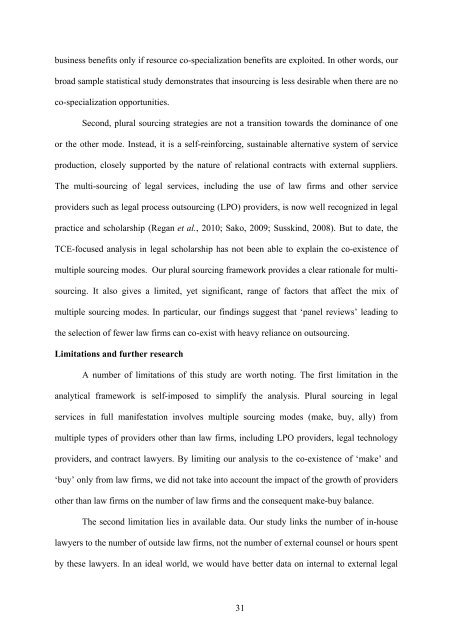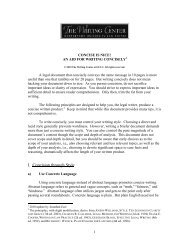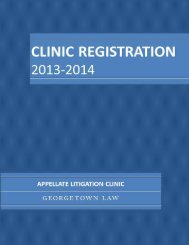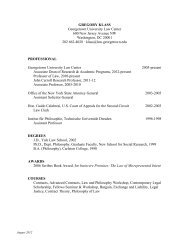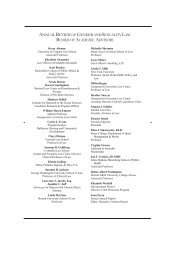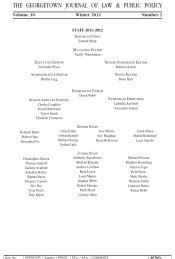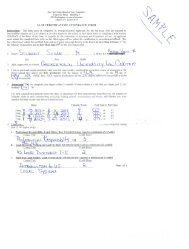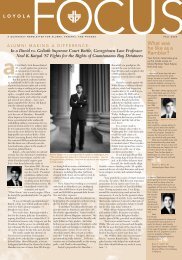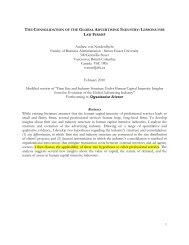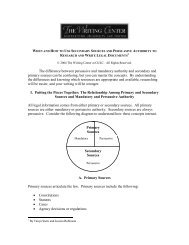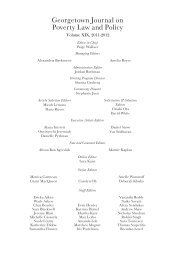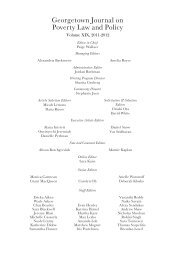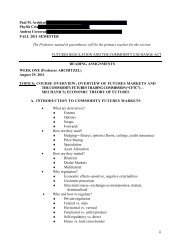Date: April 12, 2013 Topic: The Shrinking ... - Georgetown Law
Date: April 12, 2013 Topic: The Shrinking ... - Georgetown Law
Date: April 12, 2013 Topic: The Shrinking ... - Georgetown Law
You also want an ePaper? Increase the reach of your titles
YUMPU automatically turns print PDFs into web optimized ePapers that Google loves.
usiness benefits only if resource co-specialization benefits are exploited. In other words, our<br />
broad sample statistical study demonstrates that insourcing is less desirable when there are no<br />
co-specialization opportunities.<br />
Second, plural sourcing strategies are not a transition towards the dominance of one<br />
or the other mode. Instead, it is a self-reinforcing, sustainable alternative system of service<br />
production, closely supported by the nature of relational contracts with external suppliers.<br />
<strong>The</strong> multi-sourcing of legal services, including the use of law firms and other service<br />
providers such as legal process outsourcing (LPO) providers, is now well recognized in legal<br />
practice and scholarship (Regan et al., 2010; Sako, 2009; Susskind, 2008). But to date, the<br />
TCE-focused analysis in legal scholarship has not been able to explain the co-existence of<br />
multiple sourcing modes. Our plural sourcing framework provides a clear rationale for multisourcing.<br />
It also gives a limited, yet significant, range of factors that affect the mix of<br />
multiple sourcing modes. In particular, our findings suggest that ‘panel reviews’ leading to<br />
the selection of fewer law firms can co-exist with heavy reliance on outsourcing.<br />
Limitations and further research<br />
A number of limitations of this study are worth noting. <strong>The</strong> first limitation in the<br />
analytical framework is self-imposed to simplify the analysis. Plural sourcing in legal<br />
services in full manifestation involves multiple sourcing modes (make, buy, ally) from<br />
multiple types of providers other than law firms, including LPO providers, legal technology<br />
providers, and contract lawyers. By limiting our analysis to the co-existence of ‘make’ and<br />
‘buy’ only from law firms, we did not take into account the impact of the growth of providers<br />
other than law firms on the number of law firms and the consequent make-buy balance.<br />
<strong>The</strong> second limitation lies in available data. Our study links the number of in-house<br />
lawyers to the number of outside law firms, not the number of external counsel or hours spent<br />
by these lawyers. In an ideal world, we would have better data on internal to external legal<br />
31


